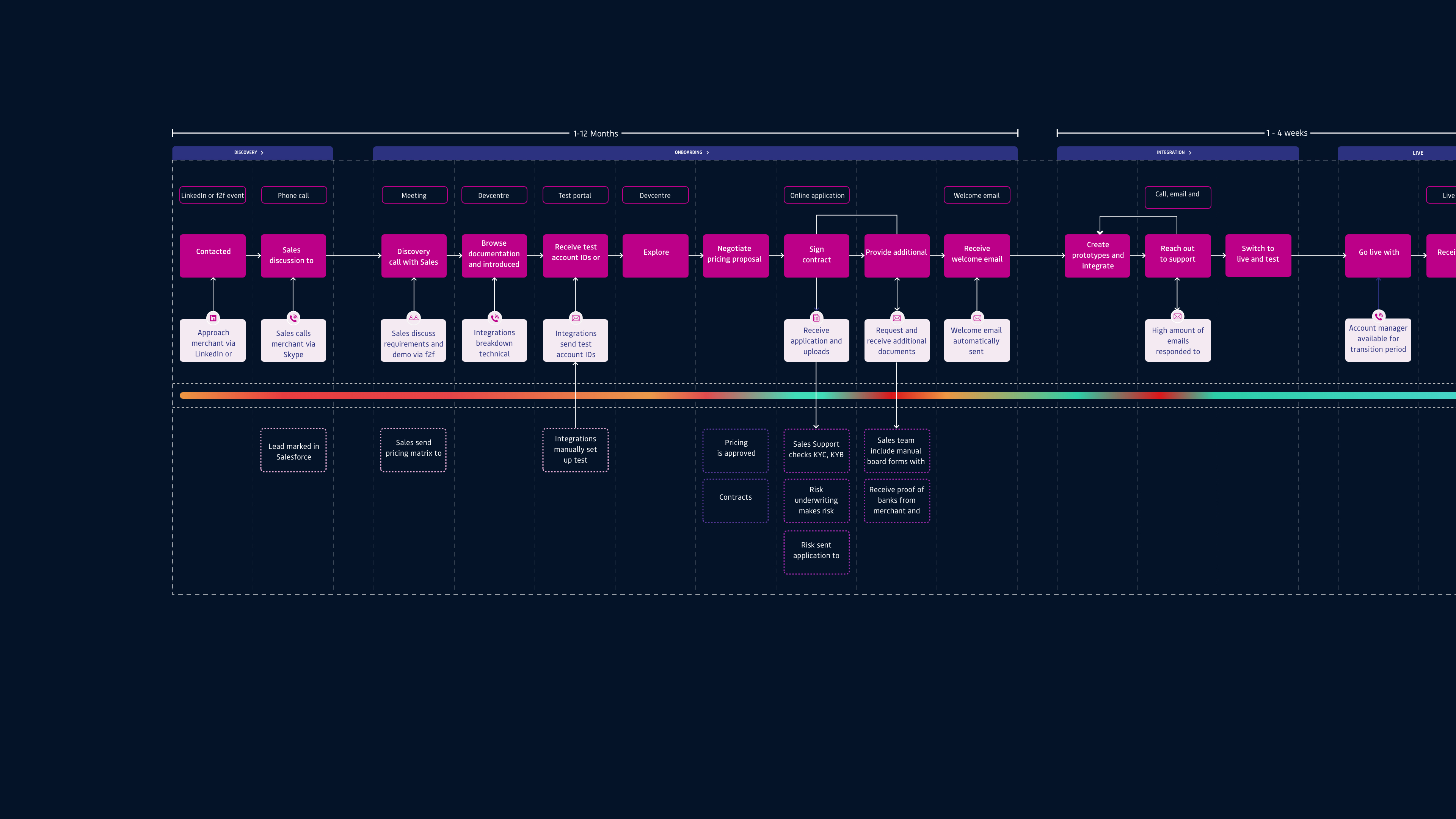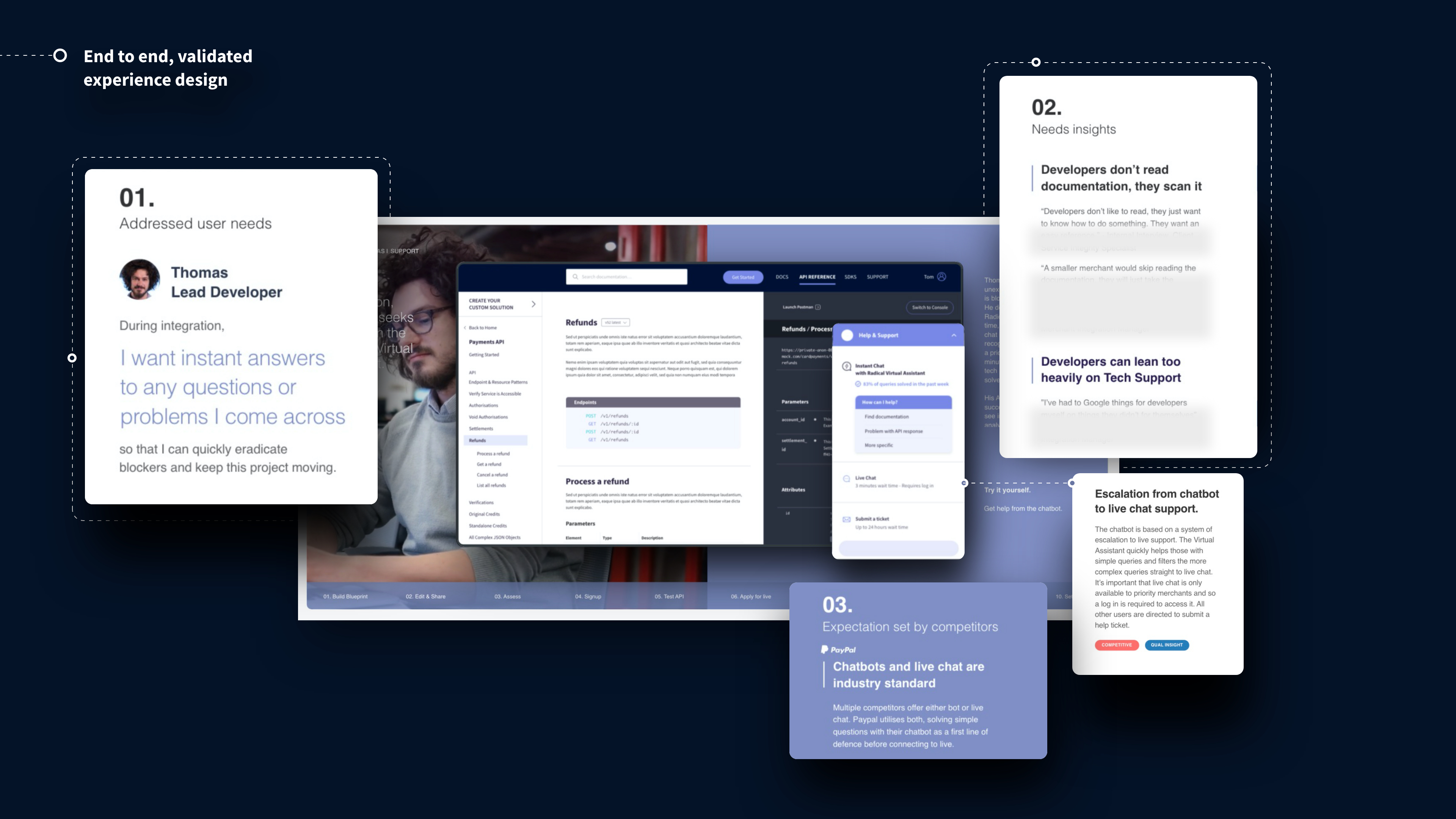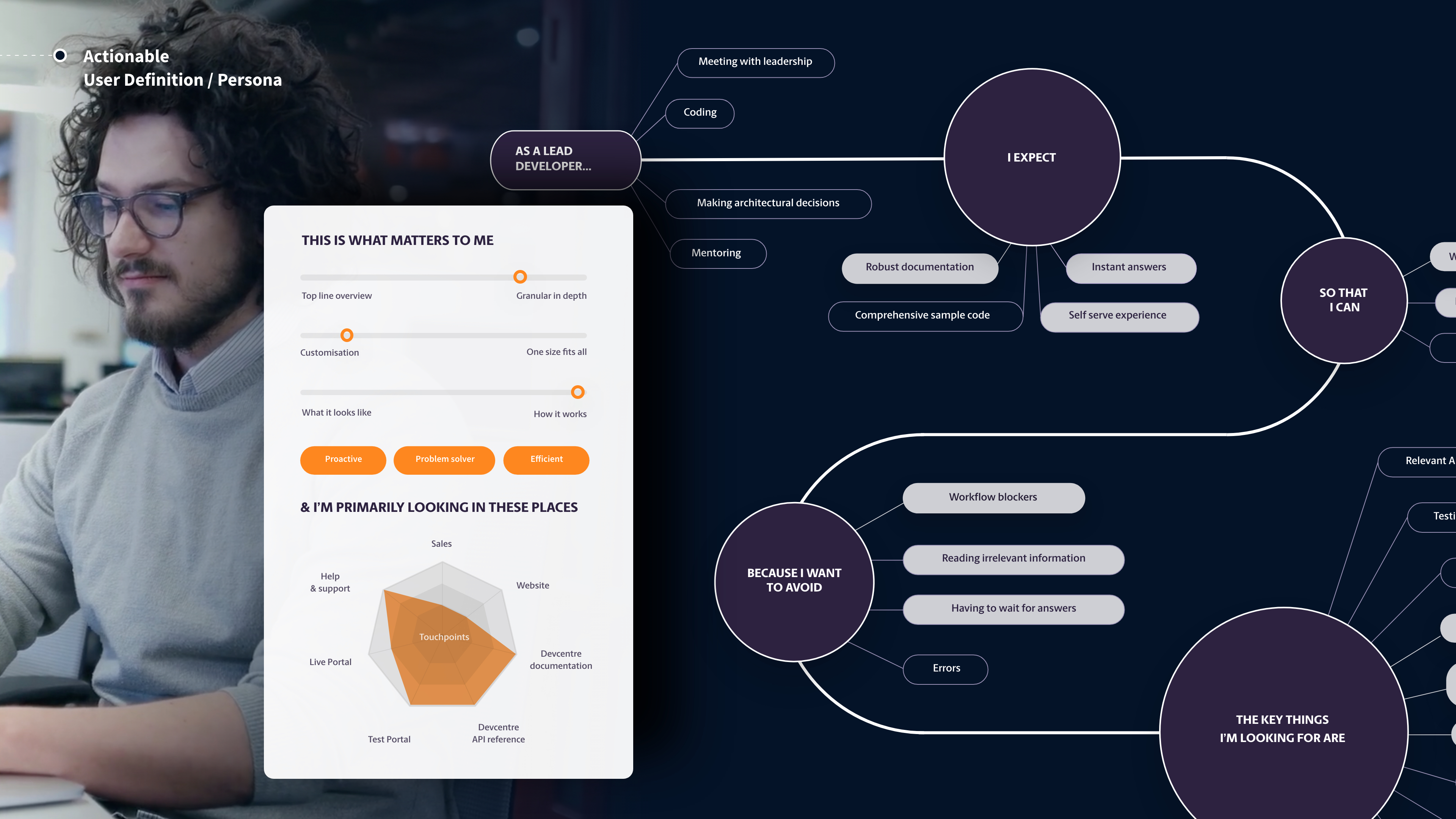

Our client, an established digital payments provider in Europe, needed an end-to-end understanding of what a good merchant integration experience looks like for their new single API platform.
Through extensive internal and customer interviews as well as competitive audits, we mapped their service and identified key moments of truth and friction. We then designed a best in class experience for 4 merchant personas, catering to each of their needs along the lead to live journey
4 months

A key challenge of this project was understanding the level of support and information each user required along the journey. In our research we found that commonly someone from Finance would engage in the search for a new payments provider while a CTO would sign off from a technical requirement perspective. As the integration progressed, a product manager would keep in touch with integration and a software engineer would execute the details.
This project had a super high learning curve as I had little understanding of API integrations before the project and struggled to assess if our client had a poor user experience or I simply didn’t understand what I was looking at. To mitigate this, we engaged in competitive journey audits to make direct comparisons with market leaders and then tested our clients experience with developers. This helped us understand that smoother, more intuitive integration experiences were being set as expectation by competitors and our tests helped us pinpoint where in the journey and why.
Much of our clients processes were still manual, based on legacy systems. To smooth out the lead to live experience, we recommended self segmentation and self support to alleviate some resource strain and enable merchants to discover if this was the right solution for them. We designed a questionnaire that would allow the Finance persona to take a first stab at the requirements, heavily supported by recommendations along the way, and then share the blueprint with his team for easy customisation. This would lead into creating a test account, personalised with the answers from their blueprint. By mapping both the customer experience and the layers of service provided, we identified onstage manual processes that could be automated for a smoother on boarding experience and a key opportunity for chat support to priority merchants.

I partnered with a UX Researcher to translate interview insights into service blueprints, personas and analyses frameworks.
We directly compared the journey and features of leading competitors to evaluate parity and conducted user tests on these journeys to better understand how these competitors were received by our key user.
Through a combination of internal interviews, customer interviews and user testing, I led the service mapping to help us identify strain to internal resources and how these friction points affected the user experience.
For our user personas we led with a user story driven approach, outlining user expectations, needs and motivations as well as which touchpoints they were most crucial to. I found this format much more effective as B2B personas.
I was the lead on translating ideas into testable features on wireframes and prototypes created in Adobe XD. Using Protopie, I constructed multi layered, end-to-end view of a fully validated merchant integration experience.
Traditional UX personas sometimes get a bad rap and I was keen to design user personas that were meaningful and actionable for our clients product and engineering teams. Working closely with my CSO, I designed a clearer user persona defined by the context of their role and the key things they would be looking for in this experience to satisfy their job requirements.
These were so clear and useful to our client I have a working theory that B2B personas are more effective if they focus on Jobs to be Done framework as opposed to traditional demographics.
